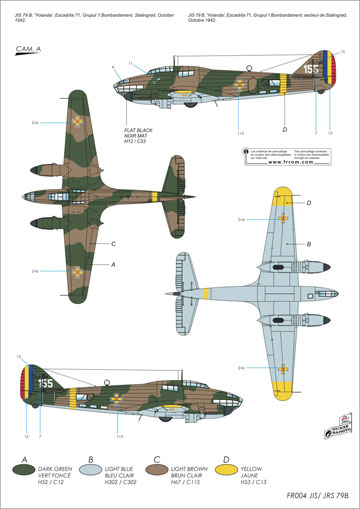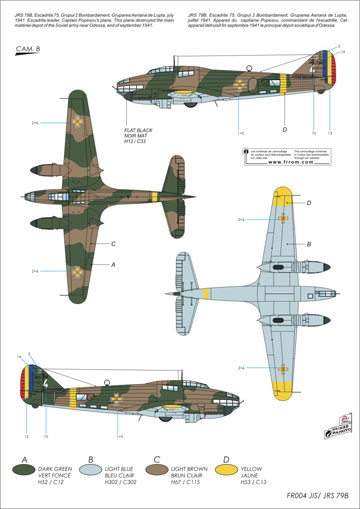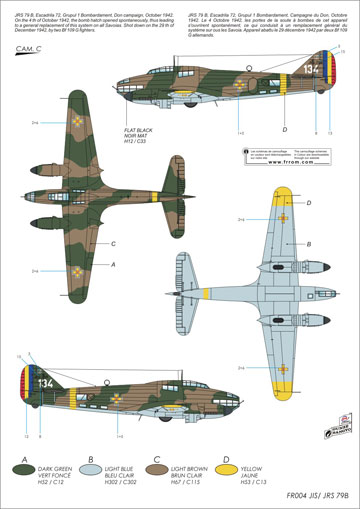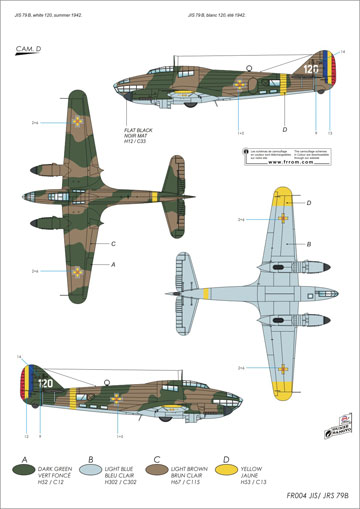FR004 Savoia SM 79 JIS/JRS B
History:
In 1937, the ARR (Aeronautica Regala Romania) bought to the italian society Savoia Marchetti 24 twin-engined SM 79 fitted with two IAR 14K radial engine (licence built Gnome Rhone 14K). These planes (SM 79 B) were under powered. So the ARR ordered 8 additional SM 79, powered by two in-line Junkers Jumo 211D giving 1200 HP. This version, on which the fuselage was deeper than on the initial B version, was known as SM 79 JIS B (JIS for Jumo Italia Savoia) and satisfied the ARR. In 1938, the rumanian I.A.R. society began to built under licence 36 additional planes, which were coded SM 79 JRS B (JRS for Jumo Romanesc Savoia). Externally, on the JRS version, the bow was shortened, to improve the view for the machine-gunner (but this modification might have been applied afterwards on some JIS)
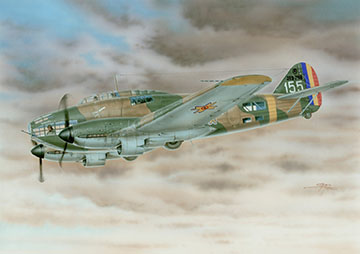
The last version, in which two in-line 1380 HP Jumo 211 F replaced the 211 D engines, was coded SM 79 JRS B1. In 1943, I.A.R began to the construction of the 36 JRS B1 (tactical numbers 201 to 236).
During WWII, the ARR used the SM 79s against Soviet Union (Odessa, Stalingrad, Don, Moldova), then, after september 1944, against Germany and her allies.
Specifications (JRS B): four-seater, middle bomber and reconnaissance. Engines: 2 x 1200 HP Junkers Jumo 211 Da. Wing span 21, 20 m, lenght: 16, 82 m, height 4,10 m. Maximum weight 11525 kg, maximum speed at 6000 m : 431 km/h, ceiling 9500 m, range 1850 km. Weapons: bombload 1575 kg, 4 machine guns.
References:
- Les bombardiers Savoia en Roumanie (M. Robanescu, Edition TMA & FRROM), in french
- L'Aviation Roumaine pendant la seconde guerre mondiale (M. Robanescu, TL Morosanu, Ed TMA), in french
- Rumanian Air Force, the prime decade (Denes Bernad, Squadron Signal Publications)
Improvements: some information on camouflages were obtained after the kit went in production. "White 120" should be a JRS, not a JIS as indicated in the camouflage schemes.
